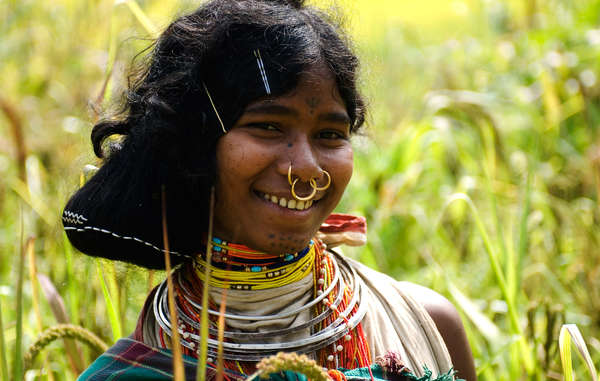That's not how it goes. You can't dismiss his findings so cavalierly when its been peer reviewed and published. Look at his sources:
REFERENCES
Balakrishnan R (2005).
African roots of the Dravidian-speaking Tribes: A case in Onomastics,
International Journal of Dravidian Linguistics
34
(1) 153-202.
Bellwood P (1979).
Man's Conquest of the Pacific
(Oxford, New York).
Bellwood P (1991).
The Austronesian Dispersal and the Origin of Languages.
Scientific American
88-93.
Benedict PK (1990).
Japanese/Austro-Tai, Ann Arbor:Karoma, 1990.
Bulbeck D (2008).
Australian Aboriginal craniometrics as construed through FORDISC, 2005. Available:
http://arts.anu.edu.au/bullda/oz_craniometrics.html [Accessed on 4/2/2008].
Chang KC (1964).
Prehistoric and early historic culture horizons and traditions in South China.
Current Anthropology
5
359-375.
Chang KC (1977).
The Archaeology of Ancient China
(Yale University Press: New Haven, 1977).
Chang KC (1980).
Shang Civilization
(Yale University Press: New Haven).
Chang KC (1987).
Archaeology of Ancient China
(Yale University Press.)
Cordaux
et al.,
(2003).
Mitochodrial DNA analysis reveals diverse tribal histories of tribal populations from India.
European Journal of Human Genetics
11
(2) 253-264.
Craib JL (1983).
Micronesian Prehistory An Archaeological Overview.
Science
219
919-927.
Fredlaender JS, Friedlaender FR, Hodgson JA, Stoltz M, Koki G, Horvat G, Zhadanov S, Schurr TG and Merriwether DA (2007).
Melanesian mtDNA complexity,
PLoS ONE
2
(2) 248.
Fucharoen G, Fucharoen S, Horai S (2001).
Mitochondrial DNA
polymorphism in Thailand.
Journal of Human Genetics
46
115-125.
Gonder MK, Mortensen HM, Reed FA, de Sousa A, Tishkoff SA (2006).
Whole mtDNA Genome Sequence Analysis of Ancient African Lineages.
Molecular Biology and Evolution
24
(3) 757-768.
Kayser M, Oscar Lao, Kathrin Saar, Silke Brauer, Xingyu Wang, Peter Nürnberg, Ronald J Trent, Mark Stoneking (2008).
Genome-wide Analysis Indicates More Asian than Melanesian Ancestry of Polynesians.
The American Journal of Human Genetics
82
(1) 194-198.
Kirch PV (1980).
Polynesian Prehistory:Cultural adaptation in Island Ecosystems.
American Scientist
68
(January/February) 39-48.
Laubenfels DJ (1968).
Australoids, Negroids and Negroes: A suggested explanation for their distinct distributions.
Annals of the Association of American Geographers
58
(1) 42-50.
Ling Shun-Sheng (1970).
A Study of the Raft, Outrigger, Double and Deck Canoes of ancient China, the Pacific and the Indian Ocean
(Taipei:Nankang).
Merriwether
et al.,
(1994).
Origins and dispersal in the mtDNA region V 9bp deletion and insertion in Nigeria and the Ivory Coast.
The American Journal of Human Genetics
.
Merriwether
et al.,
(No Date).
Mitochondrial DNA in the South Pacific. In:
Genomic Diversity.
Edited by Papilia SS, Deka R & Chakraborty R 159.
Page WJ (1988).
The Lakota Hypothesis:on the Origin of Melanesian People of the Fijian Islands.
West African Journal of Archaeology
18
31-72.
Pietrusewky M (1989).
A Lapita-associated skeleton from Natunuku Fiji.
Records of the Australian Museum
41
297-325.
Pietrusewsky (2005).
The Physical anthropology of the Pacific, East Asia: A multivariate craniometric analysis. In
The peopling of East Asia Putting together Archaeology, Linguistics and Genetics.
Edited by Sagart L, Blench R, Sanchez-Mazos A (RutledgeCurzon) 201-229.
Pugach I, Delfin F, Gunnarsdottir E, Kayser M, Stoneking M (2014).
Genome-wide data substantiate Holocene gene flow from India to Australia.
Proceedings of the National Academy of Sciences.
Available:
http://www.pnas.org/cgi/doi10.1073/pnas.121927110
Indian
Journal of Fundamental and Applied Life Sciences ISSN: 2231-6345
(
Online)
An Open Access
,
Online International Journal Available at
http://www
.
cibtech
.
org/jls
.
htm
2014 Vol
.
4
(3
) July-September
,
pp
.
694-704/Winters
Research Article
© Copyright 2014 | Centre for Info Bio Technology
(
CIBTech)
704
Reyes-Centeno H, Ghirotto S, Florent Détroit, Dominique Grimaud-Hervé, Guido Barbujani and Katerina Harvati (2014)
. Genomic and cranial phenotype data support multiple modern human dispersals from Africa and a southern route into Asia.
Proceedings of the National Academy of Sciences
published ahead of print April 21, 2014, doi:10.1073/pnas.1323666111
Tanaka M, Cabrera VM, González AM, Larruga JM, Takeyasu T, Fuku N, Guo LJ, Hirose R, Fujita Y, Kurata M, Shinoda K, Umetsu K, Yamada Y, Oshida Y, Sato Y, Hattori N, Mizuno Y, Arai Y, Hirose N, Ohta S, Ogawa O, Tanaka Y, Kawamori R, Shamoto-Nagai M, Maruyama W, Shimokata H, Suzuki R, Shimodaira H (2004).
Mitochondrial genome variation in Eastern Asia and the peopling of Japan.
Genome Research
14
1832-1850.
Tsunehiko H (2005).
Interpretation of craniofacial variations and diversification of East and Southeast Asia. In:
Bioarchaeology of Southeast Asia.
Edited by Marc Oxenhan and Nancy Tayles (Cambridge) 91-111.
Weidenreich F.,
Bulletin of Natural History Society Peiping 13, (1938-40): p. 163
White JP & Allen J (1980).
Melanesian Prehistory: Some Recent Advances.
Science
207
728-734.
Winters C (2007).
Did the Dravidian Speakers Originate in Africa?
BioEssays
27
(5) 497-498.
Winters C (2008).
ARE DRAVIDIANS OF AFRICAN ORIGIN. Available:
http://www.krepublishers.com/02-Jou...Winder-C/IJHG-08-4-325-08-362-Winder-C-Tt.pdf
Winters C (2008b).
Can parallel mutation and neutral genome selection explain Eastern African M1 consensus HVS-1 motifs in Indian M Haplogroups.
International Journal of Human Genetics
13
(3) 93-96. Available:
http://www.ijhg.com/article.asp?iss...e=13;issue=3;spage=93;epage=96;aulast=Winters
Winters C (2010).
Y-Chromosome evidence of an African origin of Dravidian agriculture.
International Journal of Genetics and Molecular Biology
2
(3) 030
–
033. Available:
http://www.academicjournals.org/IJGMB/abstracts/abstracts/abstracts2010/Mar/Winters.htm
Winters C (2010b).
9bp and the Relationship Between African and Dravidian Speakers
. Current Research Journal of Biological Sciences
2
(4) 229-231. Available:
http://maxwellsci.com/print/crjbs/v2-229-231.pdf
Winters C (2013).
The Ancient Black Civilizations of Asia
(Create space).
Winters CA (1983).
Possible relationship between Manding and Japanese.
Papers in Japanese Linguistics
9
151-158.
Winters CA (1984).
Further thoughts on Japanese Dravidian connections.
Dravidian Linguistic Association News
5
(9) 1-4.
Winters CA (1985).
The Far Eastern Origin of the Tamils.
Journal of Tamil Studies
27
(June) 65-92.
Winters CA (1986).
Dravidian Settlements in ancient Polynesia.
India Past and Present
3
(2) 225- 241.
Wood
et al.,
(2005).
Contrasting Patterns of Y chromosome.
European Journal of Human Genetics
13
867-876.
Yao YG, Kong QP, Bandelt HJ, Kivisild T, Zhang YP (2002).
Phylogeographic differentiation of mitochondrial DNA in Han chinese.
The American Journal of Human Genetics
70
635-651.
Say what you will about Clyde,but he's
thorough and multidisciplined. Can you disconfirm any of his conclusions?







